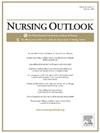急诊科工作场所暴力:临床医生认可的战略告知预防任务
IF 3.7
2区 医学
Q1 NURSING
引用次数: 0
摘要
背景:《宾夕法尼亚州医疗工作者暴力预防法》等州立法将强制要求医院报告工作场所暴力事件,并要求委员会采取安全措施。由于尚不清楚如果此类立法通过,医院委员会应优先采取哪些干预措施,因此我们描述了阻碍或促进预防和减少脊髓灰质炎升级的策略。方法对2023年8月至2024年2月期间宾夕法尼亚州一家一级创伤中心急诊科(ED)护士和医生(n = 23)进行个体和焦点小组访谈,进行定性、描述性研究。讨论确定了五个临床医生知情的主题:a)临床方案,b)临床医生在解决WPV方面的冲突,c)急诊护理中的社会脆弱性,d)资源和吞吐量,e)安全的存在和责任。结论优先干预措施包括WPV临床方案;使医院管理人员对支持临床医生在WPV事件期间的决策、安全的护士配备水平和安全人员的跨学科培训负责。本文章由计算机程序翻译,如有差异,请以英文原文为准。
Emergency department workplace violence: Clinician-endorsed strategies informing prevention mandates
Background
State legislation such as the Pennsylvania Healthcare Worker Violence Prevention Act would mandate hospital reporting of workplace violence (WPV) incidents and require committees that advance safety measures.
Purpose
Since it is unknown what interventions should be prioritized by hospital committees if such legislation were passed, we described strategies that hinder or facilitate the prevention and de-escalation of WPV.
Methods
Qualitative, descriptive study using individual and focus group interviews with emergency department (ED) nurses and physicians (n = 23) at a level I trauma center ED in Pennsylvania between August 2023 and February 2024.
Discussion
Five clinician-informed themes were identified: a) clinical protocols, b) clinician conflict in addressing WPV, c) social vulnerability in emergency care, d) resources and throughput, and e) the presence and responsibility of security.
Conclusion
Priority interventions included WPV clinical protocols; holding hospital administrators accountable to support clinician decision-making during WPV events, safe nurse staffing levels, and cross-disciplinary training of security personnel.
求助全文
通过发布文献求助,成功后即可免费获取论文全文。
去求助
来源期刊

Nursing Outlook
医学-护理
CiteScore
6.20
自引率
7.00%
发文量
109
审稿时长
25 days
期刊介绍:
Nursing Outlook, a bimonthly journal, provides innovative ideas for nursing leaders through peer-reviewed articles and timely reports. Each issue examines current issues and trends in nursing practice, education, and research, offering progressive solutions to the challenges facing the profession. Nursing Outlook is the official journal of the American Academy of Nursing and the Council for the Advancement of Nursing Science and supports their mission to serve the public and the nursing profession by advancing health policy and practice through the generation, synthesis, and dissemination of nursing knowledge. The journal is included in MEDLINE, CINAHL and the Journal Citation Reports published by Clarivate Analytics.
 求助内容:
求助内容: 应助结果提醒方式:
应助结果提醒方式:


